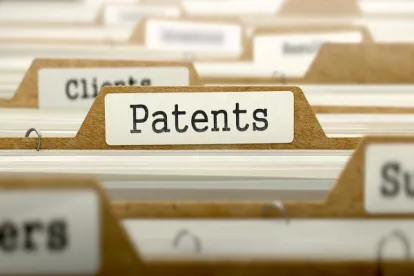Addressing the preservation of claim construction disputes for appeal and issues of divided infringement, the US Court of Appeals for the Federal Circuit affirmed the district court, explaining that O2 Micro only requires the district court to resolve claim construction issues that were actually and affirmatively raised before or during trial, and that, for purposes of a divided infringement analysis, a negative claim limitation is not an affirmative step that must be performed by the same party. LifeNet Health v. LifeCell Corp., Case No. 15-1549 (Fed. Cir., Sept. 16, 2016) (Prost, CJ).
LifeNet’s patent relates to plasticized soft tissue grafts for transplantation. Prior art tissue grafts were preserved by freeze drying, which presented several technical and medical disadvantages. LifeNet developed an improved preservation method, where the tissue’s water is replaced with plasticizers that mimic the hydrating capability of water while eliminating the need for a freeze drying step. According to the specification, the plasticizers may be removed prior to implantation, but do not have to be.
In order to overcome a prior art reference during prosecution, LifeNet added a negative claim limitation: “one or more plasticizers are not removed from said internal matrix of said plasticized soft tissue graft prior to transplantation into a human” (emphasis added). LifeCell’s accused products are plasticized soft tissue grafts for which some—but not all—of the plasticizers are removed during a two-minute rinse prior to transplantation.
During the claim construction process, LifeCell argued that the non-removal limitation means that no processing steps can be taken prior to implantation, such that no amount of plasticizer is even partially removed. Under this construction, LifeCell would not infringe. Defendant LifeNet, in contrast, argued that the non-removal limitation is met so long as the plasticizers are not fully removed. The district court did not adopt either construction, instead instructing the jury that the non-removal limitation should be given its plain and ordinary meaning.
At trial, LifeCell argued non-infringement on the grounds that up to 50 percent of the plasticizer is removed during its two-minute rinse. LifeNet responded that although LifeCell’s rinse step removes plasticizer found in gaps and voids in the tissue, the step does not remove plasticizer from the internal matrix of the tissue graft, as required by the negative claim limitation. According to LifeNet, it was the jury’s job to resolve the factual question of whether the two-minute rinse removed plasticizer from the internal matrix. The jury found the patent infringed and not invalid.
On appeal, LifeCell argued that the district court should have instructed the jury that the non-removal limitation meant that no plasticizer could be removed from any part of the tissue graft, and that the court’s failure to resolve this legal dispute about claim scope constituted error under O2 Micro. The Federal Circuit rejected the O2 Micro argument as untimely, noting that LifeCell’s arguments during the Markman phase focused only on the degree of plasticizer removal, not the location from which the plasticizer had to be removed. LifeCell’s new “location” theory came up for the first time at trial, via a motion in limine to exclude testimony contrary to the court’s claim construction and in the proposed jury instructions. At no point did LifeCell ever explicitly request a new or modified claim construction encompassing the “location” theory but rather pressed the issue as a factual one, arguing that there was not enough evidence to find infringement. For these reasons, the Court found that LifeCell failed to properly raise an O2 Micro issue.
With respect to divided infringement, LifeCell argued that it cannot be held liable for direct infringement because the non-removal step cannot actually be met until a third party (e.g., a physician) prepares and implants the tissue graft. According to LifeCell, because not all claim elements are practiced by a single entity, there can be no liability for infringement. The Federal Circuit disagreed, explaining that in typical divided infringement cases, a third party must take one or more affirmative steps in order for all claim limitations to be met. By contrast, because the non-removal step at issue is a negative claim limitation, “[t]he limitation is met without action by a third party. It is satisfied by the graft from the moment it is manufactured unless and until the plasticizer is removed from the internal matrix before implantation.” No action is required by a third party in order to satisfy all elements of the claims.



 />i
/>i

